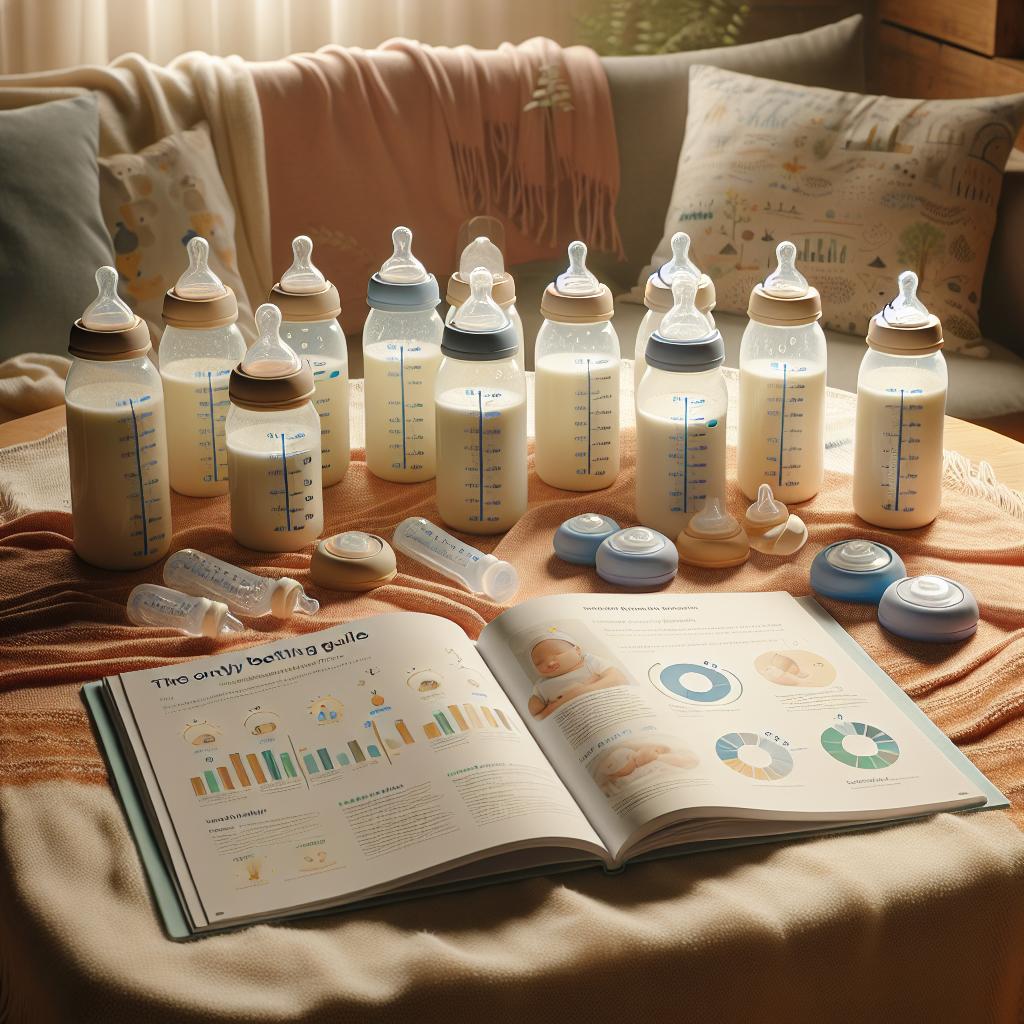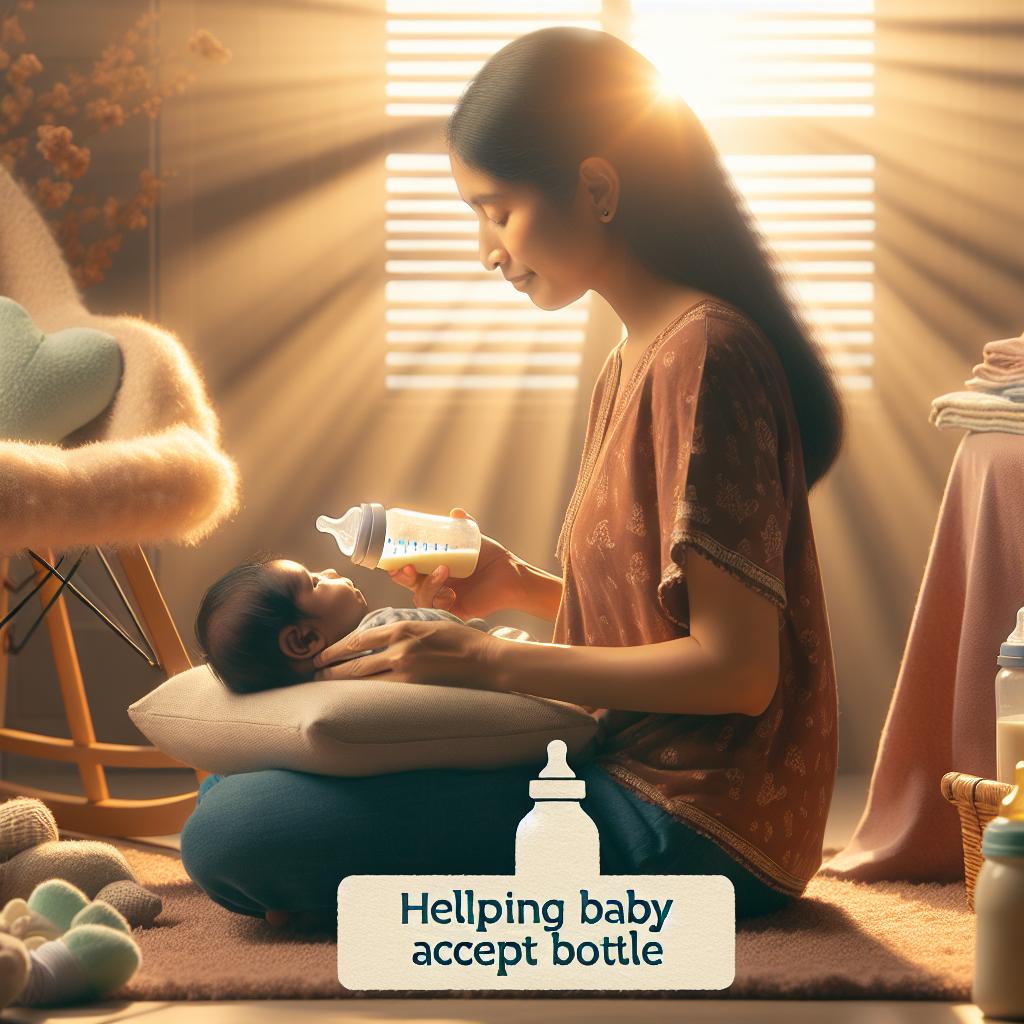The Essentials of Proper Bottle Feeding
Parents who are new to the bottle feeding world can feel overwhelmed. There is a considerable amount of information out there, making it challenging to sort out what is essential. This bottle feeding guide will help you navigate through all the noise and focus on what is genuinely important for your baby’s growth and development.
Preparing the Bottle Correctly
First things first, proper preparation is key. You might have bought the best baby bottle in the market with excellent reviews, but if you’re not preparing it correctly, chances are, you’re not getting the most out of it. But don’t worry, our guide on the must-have bottle feeding tips will help you master the art of preparing a bottle.
What Bottle to Choose
Bottle feeding can be a smooth and hassle-free process if you’ve got the right bottle in hand. Choosing a bottle for a baby who predominantly breastfeeds can be tricky. You want a bottle that mimics the breastfeeding experience to make the transition easier for your baby. Our guide on the bottle that finally worked for my breastfed baby will provide you with some insights and help make your choice easier.
Smooth Transition from Breast to Bottle
The switch from breast to bottle can be a major transition for some babies. It requires patience and understanding from parents. If you’re looking for help on how to make the transition smoother for your baby, feel free to check out our guide on the smoothest transition from breast to bottle. It’s packed with insider tips and tricks that will help make your life easier.
Some Other Points to Consider
- Always maintain a comfortable position while feeding to avoid any pressure on the baby’s belly.
- Never force the baby to finish the bottle; their appetite can vary widely.
- Always wash your hands before preparing a bottle to avoid any unwanted bacteria or germs.
- Never re-use leftover milk; bacteria from the baby’s mouth can get into the bottle and multiply.
Getting the hang of bottle feeding is not rocket science; it just requires a bit of understanding and a pinch of patience. This bottle feeding guide is not comprehensive, but it does cover some of the most important aspects of bottle feeding that every parent should be aware of. For more comprehensive guidance, feel free to check this bottle feeding advice from NHS.
Understanding Your Baby’s Feeding Pattern
Each baby has unique needs and feeding patterns. It’s critical to understand and respect your baby’s feeding cues. Crying is a late hunger signal, so look out for the early signs. They can include opening their mouth, putting their hands to their mouth, or becoming more alert and active.
Quality of Baby Bottles
The quality of the baby bottle is crucial. It would be best if you were looking for baby bottles that are BPA-free. BPA is a harmful chemical that can lead to several health problems. Besides, the bottle should be easy to clean and have well-fitted parts.
Pacing the Feed
Pacing the feed is also a crucial aspect of bottle feeding. The goal is to mimic breastfeeding, so you’ll want to hold the bottle horizontally and allow the baby time to swallow between gulps. This approach can help you avoid overfeeding and ensure that your baby is taking the time it needs to properly process the food.
Responsive Feeding
Responsive feeding is about responding to your baby’s needs. Remember, feeding is not only about nourishment but also a time for bonding and security. Therefore, always make eye contact and interact with your baby during feeding times. This interaction can help enhance your bond and provide emotional security to your baby.
Sanitizing Baby Bottles
Sanitizing baby bottles is a crucial practice that ensures your baby is protected against harmful germs and bacteria. New bottles should be sterilized before their first use, and after that, regular cleaning with hot soapy water should suffice. However, if your baby is under two months, was born prematurely, or has a weakened immune system, it’s recommended to sterilize the bottles until they reach the age of one.
More Essentail Tips
- Always prepare a fresh bottle for every feeding, even if it means wasting a bit of formula.
- Never heat the milk in a microwave as it can cause hot spots, which can burn the baby’s mouth.
- After feeding, always burp your baby to avoid gas accumulation in the belly.
- Avoid laying your baby down immediately after feeding as it can lead to regurgitation.
As your child grows, new feeding challenges may arise. Adapting to these changes and continuing to provide proper nourishment and care will ensure your baby thrives. While bottle feeding can seem overwhelming initially, with patience and practice, it will become second nature.
More Resources for Parents
It’s always beneficial to expand your parenting resources. Read more about this crucial infant factors, from secure attachment to appropriate toys and food choices, in this guide for best toys for 8 year olds, this guide to essential grammar (perfect for when your child starts school!), and this feeding guide for different stages of development.







